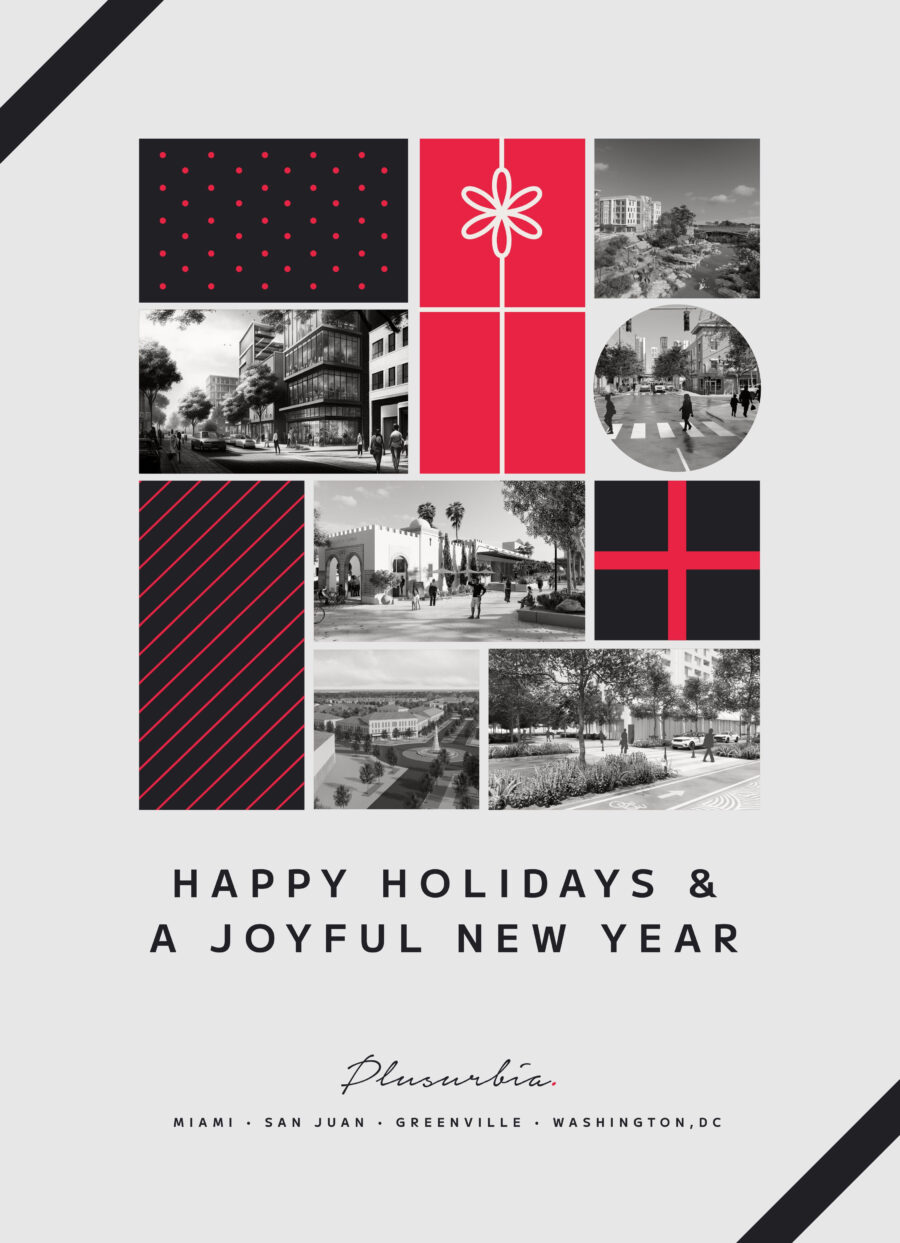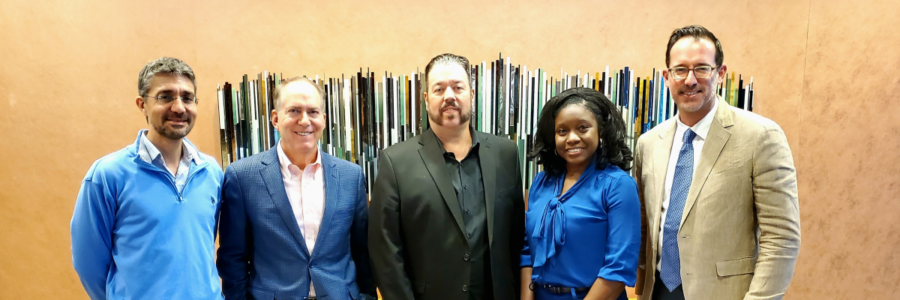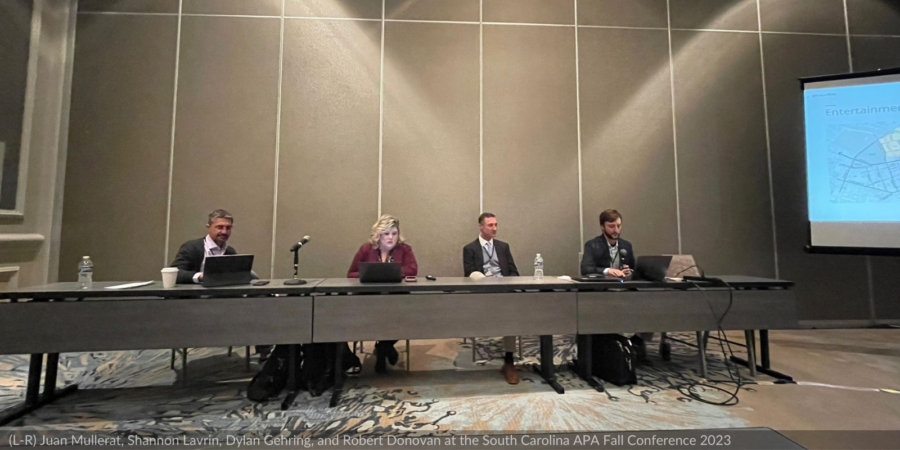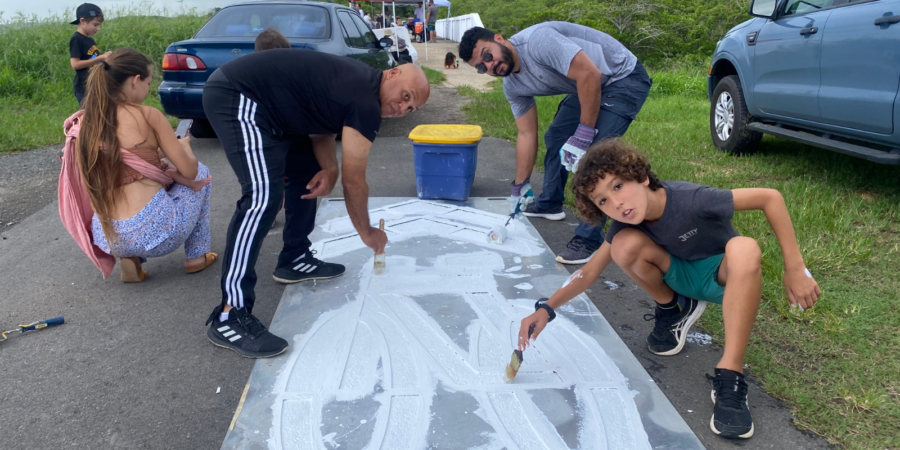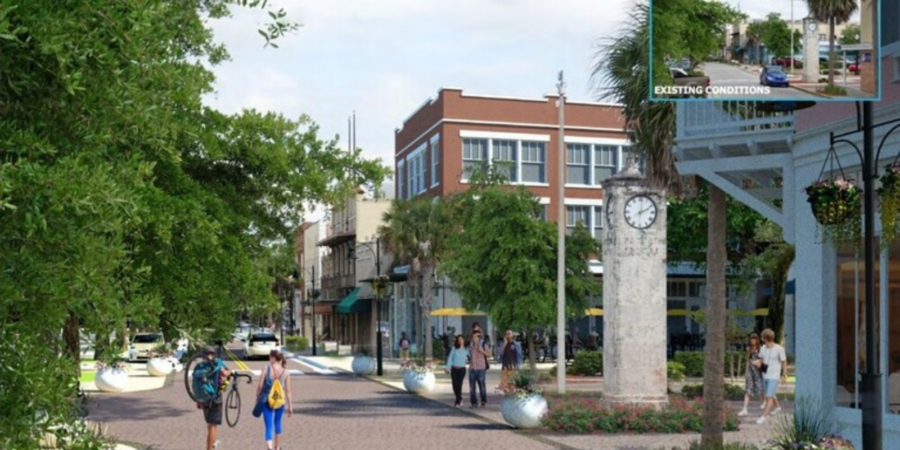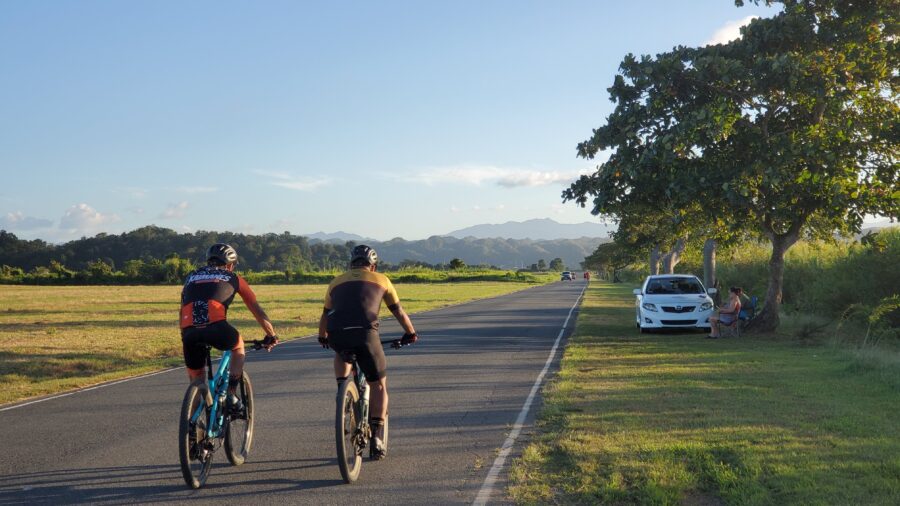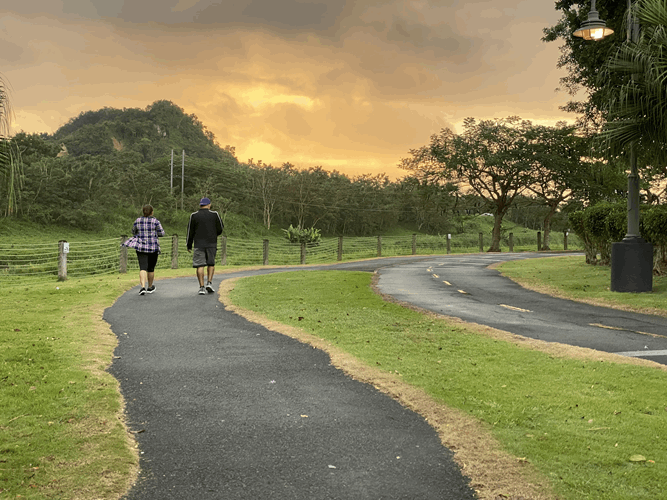our
news
AWARDS, ACCOLADES, PUBLICATIONS AND NEWS.
Are you passionate about shaping resilient, vibrant communities? Do you believe in the power of innovative, context-driven design? Plusurbia Design is looking for a creative Urban Designer to join our dynamic team.Position: Urban DesignerLocation: Miami, FLType: Full-TimeResponsibilities:Develop innovative urban design solutions for diverse projects, including master plans, community development, and public space design.
Collaborate with interdisciplinary teams to integrate planning, architecture, and landscape architecture into cohesive urban designs.
Conduct site analyses, conceptual design, and detailed design work, ensuring alignment with project goals and Plusurbia's philosophy.
Engage with communities and stakeholders to gather insights and incorporate feedback into design processes.
Prepare and present design proposals, reports, and visualizations to clients and public agencies.
Stay updated on urban design trends, zoning regulations, and sustainable practices to bring fresh ideas to projects.Required Qualifications and Skills:Bachelor’s degree in Architecture, Urban Design, or related field.
Strong portfolio demonstrating experience with urban design projects, including master plans, public spaces, and community developments.
Proficiency in design software such as AutoCAD, Adobe Creative Suite, Lumion, SketchUp, and GIS.
Excellent verbal, written, and graphic communication skills, with the ability to articulate design concepts clearly.
A passion for sustainable, resilient, and community-oriented design.
Self-motivated with good time management skills.Why Plusurbia Design?Plusurbia Design is an award-winning urban planning and design firm dedicated to creating inclusive, sustainable, and context-sensitive urban spaces. We work closely with communities, stakeholders, and local governments to deliver projects that enhance the quality of life and reflect the unique DNA of each place we touch. Our approach is rooted in the principles of placemaking, community engagement, and sustainable development.Be part of a growing, forward-thinking firm that values creativity, sustainability, and community impact.
Work on transformative projects that make a real difference in urban environments, from Regional Comprehensive plans to neighborhood and district revitalization and design.
Collaborate with a talented and passionate team in a supportive, innovative work environment.
Enjoy opportunities for professional growth and career advancement.Salary and Benefits:Salary – commensurate with experience and competitive in the marketplace.
401K ‘Elective Safe Harbor’ – Up to 3% of salary.
End-of-year performance-based bonus.
Benefits include personal days off, holidays, individual medical, dental, and vision insurance, and short—and long-term disability insurance.How to Apply:We'd love to hear from you if you're ready to contribute to meaningful urban design projects and grow with a leading firm!Send your resume, portfolio, and cover letter detailing your experience and why you’re a great fit for Plusurbia Design to careers@plusurbia.com.Applications that don't meet the requirements will be dismissed. Format the email with the subject line ‘Urban Designer Position.’
Portfolio, Resume, & Cover Letter must be in PDF format attached to the email. Deadline: Applications will be accepted until September 25th, 2024.Plusurbia Design is an equal-opportunity employer. We celebrate diversity and are committed to creating an inclusive environment for all employees.Join us in shaping the cities of tomorrow—today!
This year has seen the birth of new connections, the strengthening of communities, and the laying of foundations for more resilient cities. Together, we've embarked on innovative projects that have not only shaped our path but have also contributed to the positive transformation of the spaces we touch. [video width="1920" height="1080" mp4="https://plusurbia.com/wp-content/uploads/2023/12/20231214-PUD-Holiday-Card-Photocard.mp4"][/video] We extend our heartfelt gratitude for your collaboration, support, and shared commitment to building a better future. May the holiday season bring you joy, peace, and moments of well-deserved rest.
Wishing you and your loved ones a festive holiday season and a prosperous New Year!
Principal and founder of Plusurbia, Juan Mullerat, took the stage on Wednesday, December 05, at Nova Southeastern University to address an esteemed audience of elected officials and senior staff during the ULI Elected Official & Public Sector Density Workshop.The workshop, organized by the Urban Land Institute (ULI) Southeast Florida/Caribbean Chapter, served as a platform to share insights and expertise on the critical topic of density in urban planning. The event aimed to provide a comprehensive understanding of the challenges and opportunities associated with density from the perspective of elected officials and public sector leaders.Mullerat's presentation focused on the intricacies of managing density within the context of urban development. He addressed the engaged crowd with a wealth of knowledge, drawing from his extensive experience in urban planning and development.
In a captivating session titled "Reimagining Greenville's Gateway: A Community-initiated Plan," urban design firm Plusurbia took center stage at the South Carolina APA Fall Conference. The event, held at the Westin Hilton Head Island Resort & Spa, featured Plusurbia's Juan Mullerat and Dylan Gehring, alongside key collaborators: Greenville’s City Manager, Shannon Lavrin, and local business owner and stakeholder Robert Donovan.The focal point of the session was the groundbreaking 2022 project, the "East Gateway District," a transformative initiative aimed at revitalizing Greenville's Gateway Area. The Community Vision Plan, presented by the Plusurbia team, emerged as a strategic blueprint that embraces the neighborhood's unique assets while implementing innovative strategies to seamlessly reconnect the built environment with the adjacent downtown.Revitalization began with the City’s downtown, and in the decades since, has grown outward from there in every direction; that is, except for the Gateway Area. Instead, Greenville’s most popular entrance, seeing 54,000 vehicles move through it daily, has continued to be defined by a series of disconnected development patterns, and includes a National Register-listed Historic Neighborhood, the City’s Arena, and the County’s Law Enforcement Center.Out of this, grew a community movement to plan for the area’s future, featuring a multimodal corridor, an entertainment district, and context-sensitive infill development, solidifying the connections between this new node and downtown.Plusurbia is grateful for the large turnout and exceptional questions, helping illustrate how the privately led collaboration with the City made this project different, and the key timeliness of completing the plan before the adoption of Greenville’s new development code.
Tactical urbanism is part of the toolkit communities have to transform their streets, fostering innovation, awareness of pedestrians and micro-mobility on the road, and community belonging. Tactical urbanism revitalizes neglected spaces by empowering citizens to reshape their surroundings with small-scale, quick interventions. It cultivates a powerful civic pride, driving positive social change and sustainable development.At Plusurbia, we believe that tactical interventions can lead to long-term change. Establishing a long-term vision is critical before Tactical Urbanism interventions are considered. We work with our clients to create roadmaps that address communities' needs and create lasting change. Exercises such as mobility master planning, corridor studies, and comprehensive planning, are critical steps in generating the long term vision for mobility in any given city or township.Comprehensive and mobility planning are a careful balance between enhancing the existing public realm while anticipating future development needs. We combine best practices in complete streets design with local knowledge of network planning. As such, site visits and community outreach are core to the process of generating viable solutions that work for everyone. A successful study takes care to look beyond crash data analysis, towards travel patterns and safety audits to identify community needs that match community desires and support economic development.These planning strategies generate high-level recommendations, such as corridor selection and prioritization, necessary for the funding, design, and construction phases of projects. In addition, long-term visions are key to define objectives that lead to short-term implementations, such as pilot projects. This is where tactical urbanism is key, by creating projects that are implementable in a short period of time, which is key to demonstrate progress. This is why we are using tactical urbanism to advance the Borinquen Trail, an island-wide trail network for Puerto Rico.Tactical urbanism facilitates practitioners and governments, along with communities, to partner on advancing the implementation of soft treatments, such as pedestrian crosswalks, bicycle route symbols on pavements, and signage that will be the base for a future street improvements through reconstruction. Most of all, it is empowering to communities that wish to support safety advocacy efforts, and this empowerment leads to public policy success as communities adopt a culture of safe driving, rolling, and walking. As an added bonus, communities may adopt these tools as a means to continue the conversation beyond pilot projects, and these desires can be supported by governments through street improvement permitting and adopt-a-street initiatives.
Lake Wales Main Street was among winners of 2023 Florida Main Street Awards, which were announced during the Preservation on Main Street Conference in Ocala last week.Florida Main Street is a program administered by the Division of Historical Resources under the Florida Department of State, which currently oversees 57 communities throughout the state. By implementing the National Main Street Center's Four-Point Approach, Florida Main Street encourages economic development within the context of historic preservation through the revitalization of Florida's downtowns, cultural and heritage districts, which it describes as "the community's heart and soul."Lake Wales won a "Distinctive Preservation Award" in recognition of downtown mixed-use design standards in Category A. Those standards were recently adopted by the City of Lake Wales, and are intended to protect the historic designs of the downtown district while encouraging residential and new commercial uses that will reflect that history. The new standards were among recommendations contained in the Lake Wales Connected plan that have been adopted by the city commission.A variety of awards were given to programs across the state in recognition of individuals and projects ranging from single landmark building preservation to special events.Florida Secretary of State Cord Byrd was at the ceremony to present awards to this year's winners who achieved outstanding results in historic preservation and commercial activity through the Florida Main Street program."This year's winners have shown a remarkable commitment to preserving the distinct heritage, traditions, and culture that make their historic downtowns attractive places for commerce," said Secretary Byrd. "The Department of State is proud to showcase these success stories in the preservation and revitalization of Florida's historic downtowns."
On Celebrate Trails Day (this Saturday, April 22), Rails-to-Trails Conservancy (RTC), the largest U.S.-based trails advocacy organization, showcases the impact of trails and trail systems on people, places and the planet by encouraging everyone to get outside on trails.Joining this year's celebration is the Borinquen Trail in Puerto Rico as part of its partnership with RTC. In addition, Borinquen Trail will collaborate with RTC on technical assistance initiatives and advocate for funding sources and best practices in trail implementation. Since 1992, RTC has helped advocate for more than $20 billion in funds to support more than 40,000 trail and active transportation projects throughout the nation.The Borinquen Trail is a 600-mile multi-use trail for walking and bicycling, endorsed by RTC. The trail repurposes former railroad right-of-way encircling the island, including breathtaking beachfront and historic tunnel segments. The route will connect 22 municipalities and, once fully implemented, could generate up to $673 million in annual user spending through direct, indirect, and induced economic effects. Adding to this sum will be the growth and creation of businesses associated with the outdoor recreation industry, including restaurants, sports equipment and bicycle rental establishments, history and tourism groups, hotels, and more. The trail could support between 4,708 and 7,294 jobs and is expected to spur an annual $21-41 million in new island and federal tax income.The implementation of the Borinquen Trail has already begun, a critical step in the island’s journey to a more sustainable environmental, and resilient future. Last month, planning for the Borinquen’s pilot project in Playa de Ponce (in the south of the island) was completed, and new local partners are joining to drive construction and designation of the trail. When finished, it will establish a multimodal connection between two historic centers: Playa de Ponce and the municipality’s town core.The Borinquen Trail has the potential to significantly increase tourism island-wide, create thousands of jobs, and improve public health across Puerto Rico. With the rail-trail already in motion, there is much to look forward to as its route unfolds over the coming years. To learn more and support this effort, visit https://www.rutaborinquen.org.Celebrate Trails Day is the annual celebration of the spring trail season, recognized on the fourth Saturday in April. The national celebration is organized by RTC, the largest U.S.-based trails organization—with a grassroots community more than 1 million strong. RTC is dedicated to building a nation connected by trails, reimagining public spaces to create safe ways for everyone to walk, bike and be active outdoors. Follow #CelebrateTrails on social media for updates, and connect with RTC at railstotrails.org and @railstotrails on Facebook, Twitter and Instagram.
INTERVIEW: Juan Mullerat
Date: 20230315
Can you share more about Plusurbia and the kinds of projects your team focuses on?
At Plusurbia, we focus on making cities better places to live and work by improving walkability, affordability, and context. Our projects range from creating walkable neighborhoods with a mix of housing types to creating inclusive public spaces that can be enjoyed by people of all ages and backgrounds. We also specialize in leveraging data to create targeted solutions for communities facing gentrification and displacement, such as developing tools to help assess the potential effects of development decisions on existing residents.Our firm has always balanced private, public, and pro-bono projects. We work for municipalities or the state, we work with private developers and property owners, and then, this is the exciting side of our studio: we get involved with non-profits or communities with limited or no budgets to help them improve their neighborhoods. We are currently involved in Ruta Borinquen, a not-for-profit effort to revitalize communities along a 426-mile stretch of the former railway in Puerto Rico. We are designing and implementing pocket parks in various neighborhoods, and we are working with some communities experiencing very aggressive displacement.Our team is committed to engaging local stakeholders throughout the planning and implementation process so that all voices are heard and community vision prevails. Ultimately, we aim to ensure that all communities become safe and accessible places with robust amenities and the tools to improve lives.
Gentrification and climate change are both at the forefront of planning. However, the combination of the two, climate gentrification, is still a fairly new term and a concept we're just now trying to wrap our minds around.
For our listeners, can you explain what climate gentrification means and give examples of how you've seen it play out in Miami or other cities?
Last January, our team collected information for an ongoing economic impact analysis of the trail, which will provide hard numbers to prove its value. Dylan Gehring and David Soto visited existing trail segments that will one day be connected and integrated into the future 595 mile Borinquen Trail. They ran trail counts every day during peak-use times and collected trail user spending data by conducting brief surveys. They also examined portions of the old railroad embankments and bridge systems that are not currently trails. Among the trails surveyed, Paseo Lineal Río Bayamón proved to be the most popular and highest-quality segment.Dylan and David conducted seven days of consecutive data collection across five trails (2 trail segments were repeated to determine the factor of difference between weekdays and weekends) which garnered about 550 responses. The selection of the trails studied was tied to the necessity of having an example of each typology: urban, suburban, rural, beachfront, and natural preserve. This data will be used for an economic impact analysis and to continue to assess and design future segments of the Borinquen Trail.
We use cookies
We use our own and third-party cookies to be able to correctly offer you all the functionalities of the website for analytical purposes. You can accept all cookies by clicking "Accept cookies", obtain more information in our
Website Policyor configure/reject their use by clicking on Settings".
Accept cookies
SettingsBasic cookie informationConfirm preferences
This website uses cookies and/or similar technologies that store and retrieve information when you browse. In general, these technologies can serve very different purposes, such as, for example, recognizing you as a user, obtaining information about your browsing habits or customizing the way in which the content is displayed. The specific uses we make of these technologies are described below. By default, all cookies are disabled, except for the technical ones, which are necessary for the website to work. If you wish to expand the information or exercise your data protection rights, you can consult our Website Policy.
Accept cookiesManage preferencesTechnical and/or necessary cookies
Always active
Technical cookies are those that facilitate user navigation and the use of the different options or services offered by the web such as identifying the session, allowing access to certain areas, filling in forms, storing language preferences, security, facilitating functionalities. (videos, social networks…).
Analytic Cookies
Analysis cookies are those used to carry out anonymous analysis of the behavior of web users and that allow user activity to be measured and navigation profiles to be created with the objective of improving websites.

